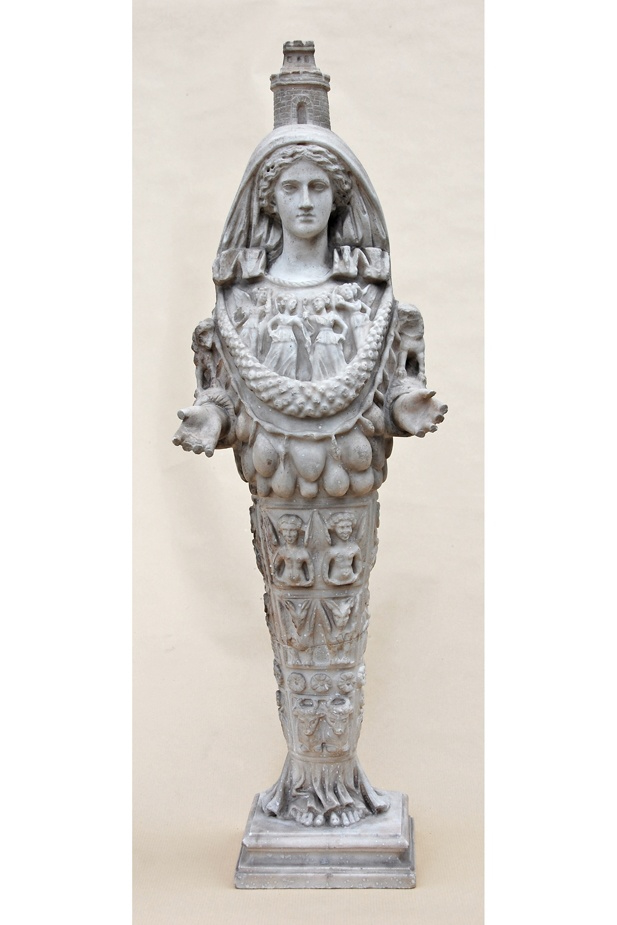Lorem ipsum dolor sit amet, consectetur adipiscing elit. Morbi eu nulla vehicula, sagittis tortor id, fermentum nunc. Donec gravida mi a condimentum rutrum. Praesent aliquet pellentesque nisi.


Marble statuette: Artemis Ephesia. 2nd quarter 2nd century AD.
The statuette shows the goddess Artemis standing upright with her legs closed and her arms bent forward. Only folds of fabric resting on her shoulders can be seen on the front of the statuette from the robe draped over her head. Although the back is relatively sparsely worked out, the folds of the chiton and the lower end of a tänie are indicated. This dainty falls down as a smooth band that widens towards the bottom and ends in three spherical pendants at the level of the neck. A border lines the visible sides of the dainty. The goddess wears a twisted ribbon around her neck. Beneath it, at chest height, four winged Nike appear antithetically facing each other. They are dressed in belted peploi, wear their hair tied together and hold attributes (wreath, palm branch, snake, shield of victory?) in their hands. A garland of flowers hangs down from Artemis’ shoulders. A chain of elongated, convex elements with stylized acorns as pendants is attached to the upper arms beneath the garland. A lion sits in the crooks of the chiton-sleeved arms on either side, their heads not preserved. Irregularly twisted woollen bandages wound three times around the forearms cover the hem of the sleeves. Beneath the acorn necklace are two rows of oval objects that wrap in a slight arc around the front and sides of the image of the god. The explanation for this decoration remains unclear (eggs, testicles, breasts?). Below them, a piece of robe wrapped around the lower body is visible through a horizontal stripe. This is divided by horizontal and vertical strips, resulting in two rectangular, superimposed fields on the preserved front and two fields on each side. In the upper front panel are two naked, winged tendril women, whose bodies emerge from a leaf cup from the waist upwards, into which they reach with their hands. Below them, the upper bodies of two griffins are still recognizable. The side panels are each decorated with a bee with a rosette above its head.
Lit.: Klöckner/Recke (2010), p. 65, no. 28 [A. Ulbrich]
Hadrianic (126-150 AD)